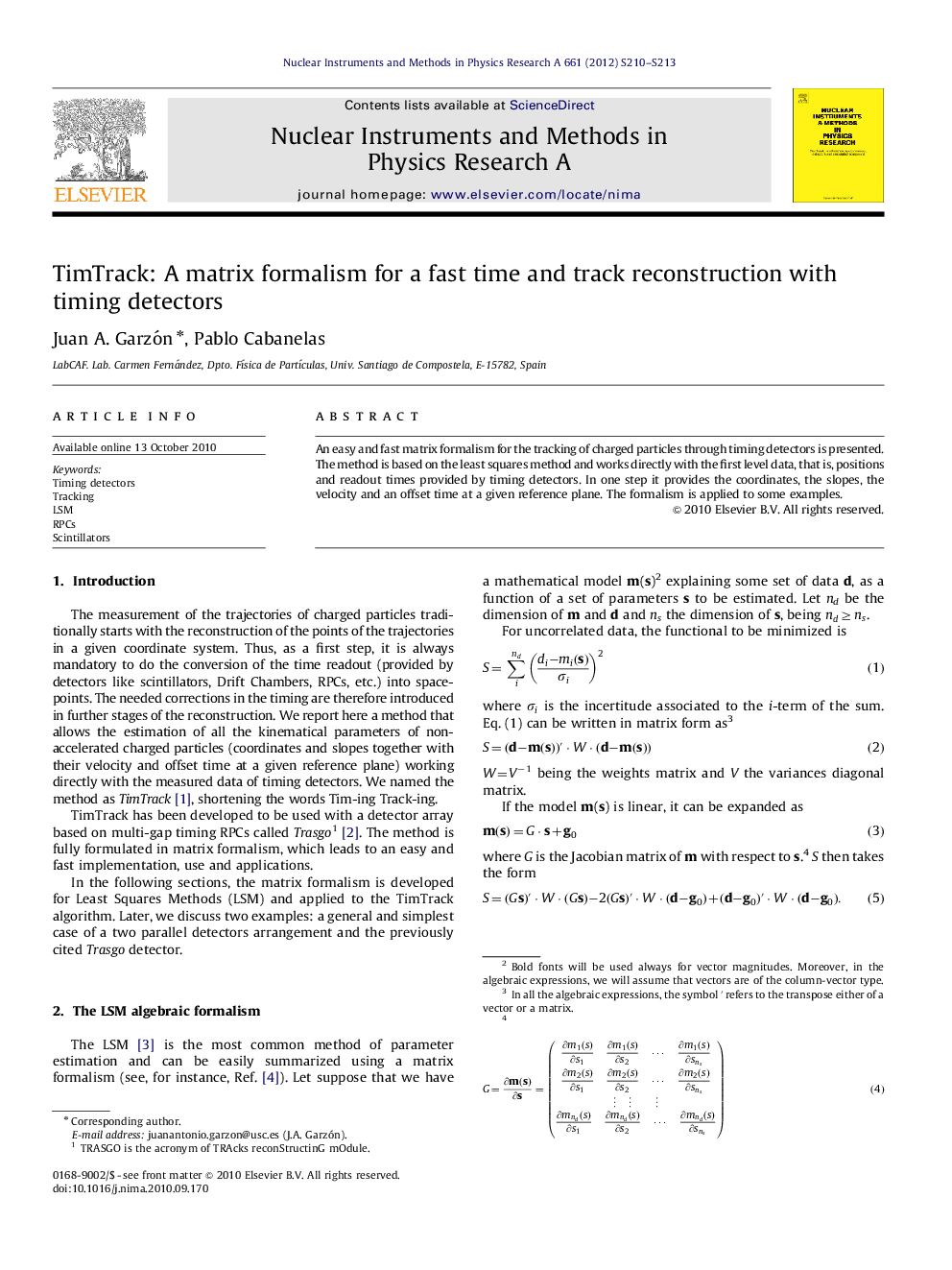| Article ID | Journal | Published Year | Pages | File Type |
|---|---|---|---|---|
| 1824071 | Nuclear Instruments and Methods in Physics Research Section A: Accelerators, Spectrometers, Detectors and Associated Equipment | 2012 | 4 Pages |
Abstract
An easy and fast matrix formalism for the tracking of charged particles through timing detectors is presented. The method is based on the least squares method and works directly with the first level data, that is, positions and readout times provided by timing detectors. In one step it provides the coordinates, the slopes, the velocity and an offset time at a given reference plane. The formalism is applied to some examples.
Related Topics
Physical Sciences and Engineering
Physics and Astronomy
Instrumentation
Authors
Juan A. Garzón, Pablo Cabanelas,
